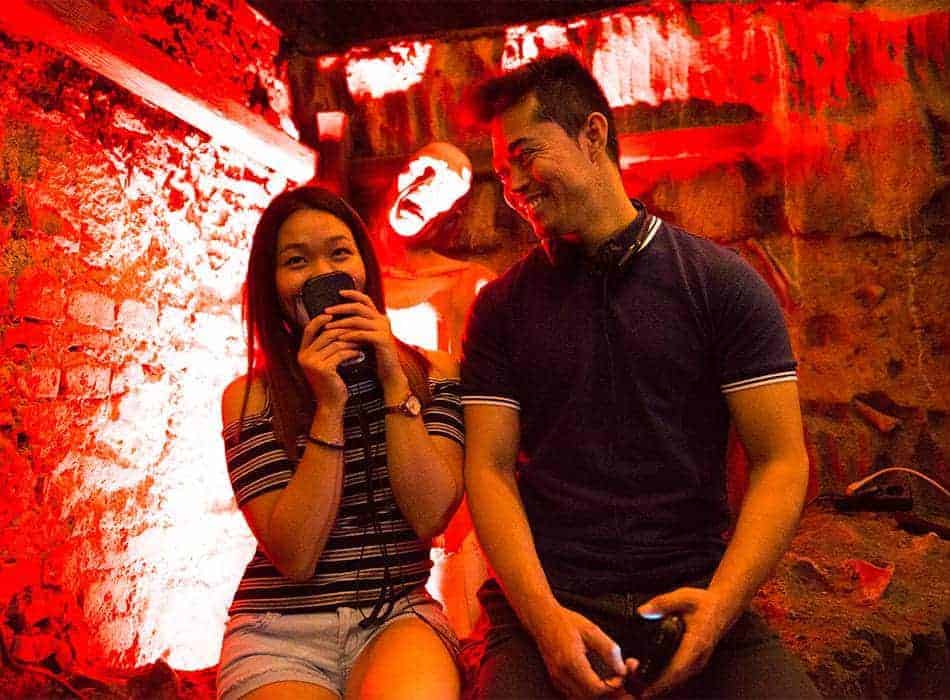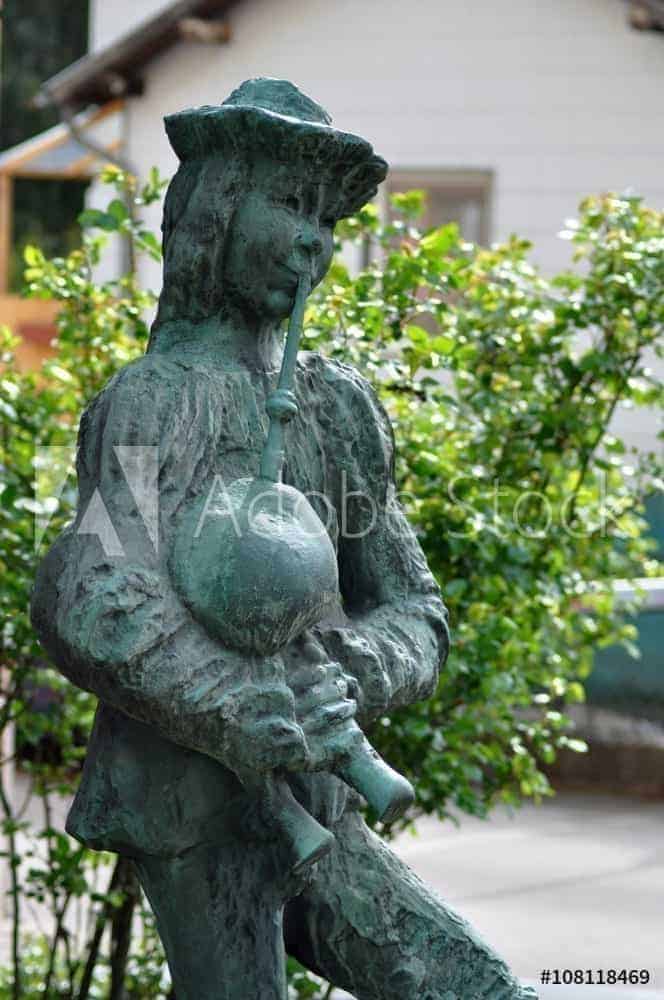Menu
- +43 1 585 04 55
- office@timetravel-vienna.at
- Daily from 9:30 to 19:00
Time Travel takes you right back in time to Vienna’s last major plague epidemic in 1679.
What does a plague doctor look like and what does it feel like to stand in the middle of a plague pit?
In Time Travel you will experience what life was like in Vienna at the time of the plague and why even the plague can be survived with humor, wine and song.
Augustin, a street musician, becomes famous during the plague when he falls down drunk one day and is taken to a plague pit outside the city.
Only the next morning is he pulled out again, singing, and has been known to all Viennese ever since through the song “Oh you dear Augustin”.
Today, the plague is still considered the worst disease in history.
The term plague was originally used to describe any disease that was of an epidemic and deadly nature .
The Roman Emperor Marcus Aurelius is said to have died of the plague in Vienna.
The plague has plagued the city of Vienna at regular intervals since the Middle Ages and was an integral part of Viennese life.
Vienna suffered particularly from the great plague of 1679 and the plague column on the Graben is still a reminder of this today.
It was the Baroque era and all of life was a theater.
The Spanish etiquette at court, the fashion with the huge hoop skirts and allonge wigs, the lace-trimmed vests and the high heels, and even the emphasis on the differences in rank between the individual social estates and classes.
However, not much had changed in the streets and squares since the Middle Ages.
The alleyways were still dark and narrow, sometimes unpaved and full of pits and swamps.
Many decrees calling for cleanliness have been handed down.
There were orders not to throw dirt, filth and dead animals into the alleyways, but to carry them outside the city.

Whereas in the Middle Ages, cleaning bodies in bathing establishments was an integral part of Viennese life, people now feared contracting syphilis.
This led to a preference for powder, perfume and wigs. Fleas and lice multiplied rapidly.
The noble ladies wore tubes smeared with honey under their skirts to catch the annoying parasites.
Personal hygiene had reached a catastrophic lowpoint.
The doctors, bathers and healers were at a loss.
They had their own plague doctors, so-called beak doctors .
They wore a long, waxed robe and their faces were protected by a mask with a duckbill-like protrusion .
This beak contained herbs and liquids called theriac, which were supposed to protect against the “vapors” of the sick.
They wore gloves over their hands .
To avoid having to get too close to the sick, they gave their instructions with a pointer.
They provided bloodletting, sweating cures and Theriak treatments, but none of this could prevent around 100,000 Viennese from dying.
The last plague epidemic took place in Vienna in 1713 .
Better hygiene and attempts to eradicate rats made it possible tocontain the plague in Europe from around 1740 .
It was not until 1894 that the Swiss Alexandre Yersin discovered the plague pathogen and the rapid introduction of antibiotics put an end to the constant threat in Vienna.
However, the plague has not been eradicated.
From Madagascar, Congo and Peru to the USA, plague deaths still occur and infection is still possible.
The “Dear Augustin” (actually Markus Augustin) is said to have actually existed in Vienna (1643-1685).
Because of his indestructible sense of humor, Augustin the bagpiper was dear to the Viennese during the plague.
He was generally known as “dear Augustin” and that’s how we remember him.
He was a well-known balladeer and bagpiper who lived in St. Ulrich and preferred to perform in pubs such as the “Roter Hahn”, the “Gelber Adler” or the beer house “Zum roten Dachl” on the Fleischmarkt, today’s Griechenbeisl.
In 1679, when the plague was raging repeatedly in Vienna, dear Augustin sits lonely one evening in the beer house “Zum roten Dachl”, because most people at home are mourning the bereaved and are afraid of further contagions and thus do not leave the house.
So he drinks alone and then staggers through the streets of Vienna, heavily drunk, falls down, remains lying down and immediately falls fast asleep.
He does not notice when the plague servants come by with the hearse and load him up.
They dump the dead into the plague pit near St. Ulrich, where the Augustinbrunnen fountain is located today.
As dawn breaks, Augustin wakes from his deep sleep and is dazed.
He realizes that he is sitting on a pile of corpses and it dawns on him what has happened.
Out of his mind with horror and fear, he screams desperately for help, but no one can hear him.
Then he grabs his bagpipes and starts to play.
Following the sounds, the morning churchgoers approach the plague pit and find Augustin. They immediately help him out of the pit.
It is believed to be a miracle that he spent the night with the dead without catching the disease. Augustin lived a long and healthy life and delighted the Viennese with his music.

The “Dear Augustin” (actually Markus Augustin) is said to have actually existed in Vienna (1643-1685).
Because of his indestructible sense of humor, Augustin the bagpiper was dear to the Viennese during the plague.
He was generally known as “dear Augustin” and that’s how we remember him.
He was a well-known balladeer and bagpiper who lived in St. Ulrich and preferred to perform in pubs such as the “Roter Hahn”, the “Gelber Adler” or the beer house “Zum roten Dachl” on the Fleischmarkt, today’s Griechenbeisl.
In 1679, when the plague was raging repeatedly in Vienna, dear Augustin sits lonely one evening in the beer house “Zum roten Dachl”, because most people at home are mourning the bereaved and are afraid of further contagions and thus do not leave the house.
So he drinks alone and then staggers through the streets of Vienna, heavily drunk, falls down, remains lying down and immediately falls fast asleep.
He does not notice when the plague servants come by with the hearse and load him up.
They dump the dead into the plague pit near St. Ulrich, where the Augustinbrunnen fountain is located today.
As dawn breaks, Augustin wakes from his deep sleep and is dazed.
He realizes that he is sitting on a pile of corpses and it dawns on him what has happened.
Out of his mind with horror and fear, he screams desperately for help, but no one can hear him.
Then he grabs his bagpipes and starts to play.
Following the sounds, the morning churchgoers approach the plague pit and find Augustin. They immediately help him out of the pit.
It is believed to be a miracle that he spent the night with the dead without catching the disease. Augustin lived a long and healthy life and delighted the Viennese with his music.

The Regency of Emperor Franz Joseph I until the End of the Monarchy (1848 – 1918)
In 1848, Emperor Franz Joseph I – the great-great-grandson of Maria Theresa – ascended the throne.
His time was marked by many political defeats.
The Battle of Königgrätz in 1866 bore witness to this, when the Habsburgs disappeared from the map of Germany as a whole.
In 1867, a settlement was reached with Hungary and the Habsburg Empire was renamed the Austro-Hungarian Dual Monarchy.
The Habsburgs remained kings of Hungary until they were deposed at the end of the First World War in 1918.
Emperor Franz Joseph I, the penultimate emperor, reigned for 68 years, longer than any other member of the dynasty before him.
He died at the age of 86 in the middle of the First World War in November 1916.
His beloved wife Elisabeth, better known as Sisi, was only at his side at the beginning.
She preferred warmer climes and tried to avoid the strict ceremonial of the Viennese court.
Together they had four children, three daughters and one son.
Their only son, Crown Prince Rudolf, committed suicide at a young age together with his mistress Mary Vetsera.
This went down in history as the tragedy of Mayerling.
Until the beginning of the 20th cent.
The Habsburgs held together the multi-ethnic state with a population of around 51 million inhabitants in 13 countries.
The assassination of the heir to the throne Franz Ferdinand in Sarajevo on June 28, 1914 was one of the triggers of the First World War, which lasted from 1914 to 1918.
The last Habsburg emperor was Charles I, the great-nephew of Franz Joseph I. Charles reigned for just two years from 1916 to 1918, i.e. until the end of the monarchy.
He was sent into exile in Madeira together with his wife Zita, as he never officially abdicated as emperor.
In 1918, the reign of the House of Habsburg-Lorraine ended after 640 years with the defeat in the First World War.
The First Republic was proclaimed in Austria in November 1918.
Opening hours
Daily from 10:00 – 20:00
Tour start every 30 minutes
(’00, ’30)
We ask you 15 minutes before
Tour start to arrive
Duration: about 30 minutes
Last admission: at 7:30 p.m.
Directions & Parking
Habsburgergasse 3/8
1010 Vienna
Near Graben
Payment options
A partner company of the
Vienna City Card

Information on data protection
We use technologies such as cookies, LocalStorage, etc. to customize your browsing experience, to personalize content and ads, to provide social media features, and to analyze traffic to our website. We also share information about how our site is used with our social media, advertising and analytics partners. Our partners may combine this information with other data that you have provided to them or that you have collected as part of using the Services (incl. US providers). You can find more information about the use of your data in our data protection declaration.
data protection
This website uses cookies so that we can offer you the best possible user experience. You can find more information about the use of your data in our data protection declaration.
Strictly Necessary Cookies
Strictly Necessary Cookie should be enabled at all times so that we can save your preferences for cookie settings.
Marketing & Statistics
This website uses Google Analytics to collect anonymous information such as the number of visitors to the site and the most popular pages. Leave this cookie enabled helps us to improve our website.
Google Tag Manager
This is a tag management system. Using the Google Tag Manager, tags can be integrated centrally via a user interface. Tags are small pieces of code that represent activitiescan track. Script codes from other tools are integrated via the Google Tag Manager. The Tag Manager makes it possible to control when a specific tag is triggered.